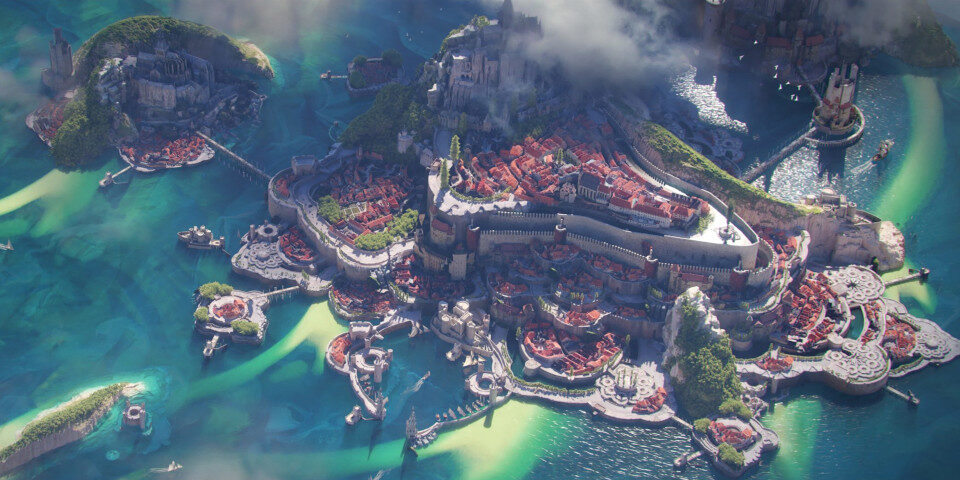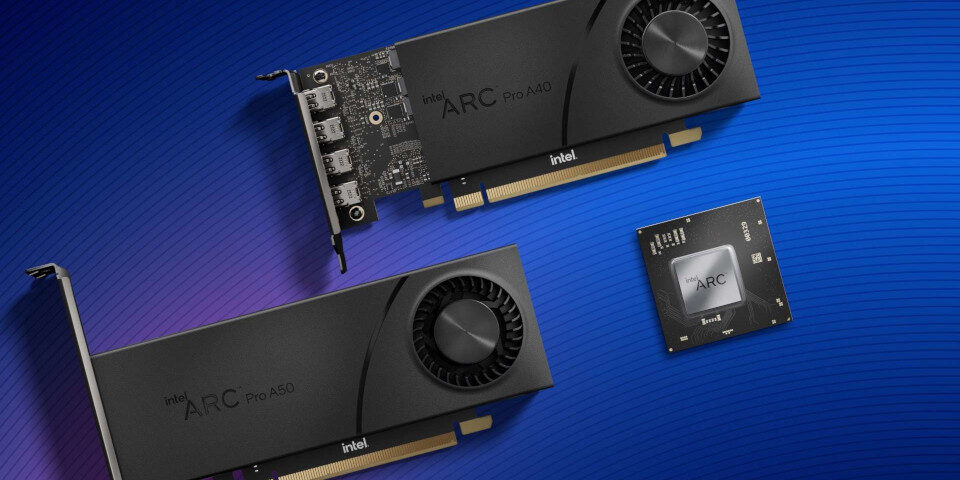Blender 3.3 LTS ships

Main image: part of the Blender 3.3 splash screen: ‘Scans Island’ by Piotr Krynski.
The Blender Foundation has released Blender 3.3, the latest version of the open-source 3D software, and its latest Long-Term Support release.
Key changes include a much-anticipated new hair grooming system, new UV unwrapping nodes, integration of the Grease Pencil 2D animation toolset with the Dope Sheet and Timeline, and support for Intel Arc GPUs.
Below, we’ve picked out five of the most significant changes, along with smaller updates to the core toolset, including 3D modelling, digital sculpting and painting, and import and export of USD scenes.
1. New curve-based hair grooming toolset
One of the most anticipated features in the release, the new hair grooming toolset also marks one of the first major extensions of Blender’s Geometry Nodes system beyond modelling and object scattering.
Building on Geometry Nodes’ support for curves, the new Curves Sculpt Mode lets users groom hair and fur directly in the viewport, using a brush-based workflow.
The initial release features 11 different brushes for painting guide hairs onto the surface of character sculpt, combing them, adjusting their density, and even sliding them around on the surface.
Unlike Blender’s existing particle-based hair system, painting is done in 3D space, rather than as a 2D projection, simplifying workflow, and reducing unnatural-looking artefacts.
Hair curves are supported in all of Blender’s render engines: Cycles, Eevee and Workbench previews.
According to this blog post, the new system should support “at least 120,000 hair strands edited at the same time”, with underlying performance of the curve nodes having been improved “from 3x to over 10x”.
2. Geometry nodes power procedural UV workflows and motion graphics effects
Geometry Nodes also now power procedural UV workflows, via UV Unwrap and Pack UV Islands nodes.
The new nodes have “equivalent functionality” to their counterparts in Blender’s UV Editor, automatically unwrapping the UVs of a mesh, and packing them to minimise wasted UV space.
However, unlike the existing tools, the new nodes can be wired to other geometry nodes, meaning that during procedural modelling, the UVs of the resulting model should update as the geometry is edited.
Other new nodes in Blender 3.3 include Points, for generating point clouds, Volume Cube, for generating volume grids, and three new nodes for path finding across mesh edges.
The latter can be used to create a range of interesting motion graphics effects, and even for animating finding the correct path through a maze, as shown in this downloadable demo scene.
3. New outline rendering options in Grease Pencil
Blender 3.3 also features a significant update to Grease Pencil, the software’s 2D animation system, with Grease Pencil keyframes now visible in the Dope Sheet and Timeline editors.
The Line Art modifier, which generates 2D Grease Pencil strokes from 3D geometry, now loads geometry “approximates four to eight times faster”, and gets two interesting new features.
The first is accurate calculation of light and shadow contours, making it possible to render outlines to shadows cast by or on objects, as shown in the video above.
The second is silhouette rendering, making it possible to render outlines only for the silhouettes of objects, with options to control how the outlines of overlapping or intersecting objects are generated.

4. GPU rendering on Cycles on Intel and older AMD GPUs
In addition, Blender becomes one of the first DCC applications to officially support Intel’s Arc GPUs, the firm’s new family of discrete graphic cards, along with its data center GPUs.
Intel cards are supported for GPU rendering in Cycles on Windows and Linux, although it’s very much an initial implementation, given that the Arc Pro A-Series hasn’t shipped yet, and drivers are still in beta.
Future plans include support for the new GPU mode in Intel’s Open Image Denoise render denoising system, and GPU ray tracing via its Embree kernels, both already supported in Cycles on the CPU.
AMD users get GPU rendering on Vega and Vega II GPUs on both Windows and Linux.
AMD GPUs were supported when Cycles X, the recent overhaul of the renderer, rolled out in Blender 3.0, but initially only for newer cards, and only on Windows.
The update extends that support to a range of older cards, and even integrated graphics, although the most significant additions are likely to be workstation cards like the Radeon Pro WX 9100 and Radeon Pro VII.
5. New planar tracking and video retiming options
Blender’s built-in VFX tools get a number of updates in Blender 3.3, but the most eye-catching is probably the New Image from Plane Marker option in the planar tracker.
It generates an unwarped texture from the region of the footage selected during tracking, which can then be edited in a 2D image-editing package, and reprojected onto the original footage.
You can see it in action in the video above to replace the graffiti on the wall in the background of the shot.
The Video Sequencer, Blender’s video editing toolset, gets a new retiming system, making it possible to edit retimed clips like normal ones, and to automatically match their speed to the scene framerate.
Updates to other core toolsets
The release also features smaller updates to many of Blender’s core toolsets, including 3D modeling, digital sculpting, and painting and texturing – including a new option to pack UDIM texture sets into .blend files.
The Library Overrides system gets a number of workflow improvements, with overrides getting their own sub-menu in the Outliner, with a more streamlined set of options.
Under the hood, performance when importing VFX and animation production scenes with large numbers of objects has been improved – in the case of one USD scene with 260,000 objects, import time fell from 3.5 hours to just 1.5 minutes. It is also now possible to export OpenVDB volumes in USD format.
The update is also the latest Long-Term Support (LTS) release, and will receive critical fixes for two years.
System requirements
Blender 3.3 is available for Windows 8.1+, macOS 10.13+ and Linux. It’s a free download.
See Blender Foundation’s overview of the new features in Blender 3.3
